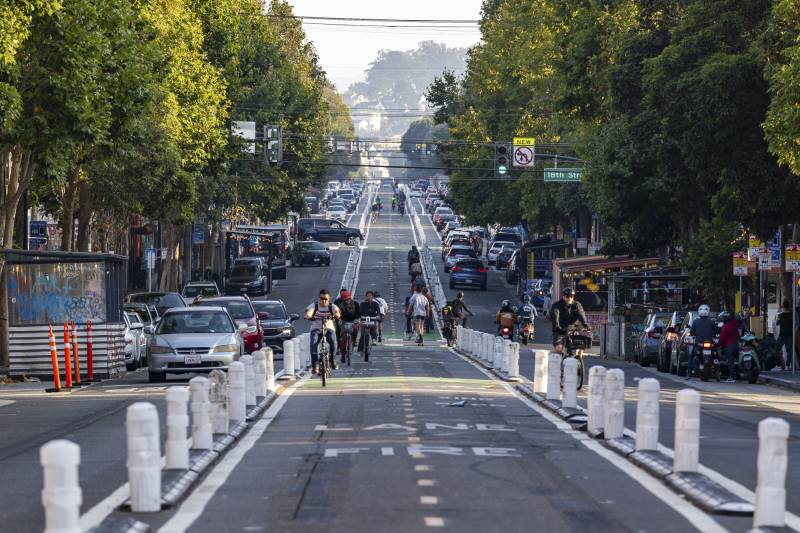“SFMTA should take immediate action to replace the center bikeway with curbside protected bike lanes in order to help local businesses, reduce car traffic, and make Valencia more appealing for people to visit.” said Luke Bornheimer, a sustainable transportation advocate who has called the center-running bike lanes design “dangerous” and “unintuitive.”
Some small business owners along the hub of Valencia Street have also organized against the bike lane. They say the pilot’s conversion of general parking spaces to a new kind of dual-use loading zone has decreased would-be customers visiting their shops. Many businesses on the corridor now sports signs in their front windows reading: “This bike lane is killing small businesses and our vibrant community.”
“If the goal was to systematically destroy the livelihood of the Valencia corridor, then it has been a complete success for the SFMTA,” said Kevin Ortiz, co-president of the San Francisco Latinx Democratic Club. “Any new design must be carefully vetted with community and business stakeholders, not in the top-down approach SFMTA usually approaches these ‘pilot’ projects with.”
From the beginning, SFMTA officials have been adamant that they would rip up the pilot project and implement a new design if the current pilot was not working. Tumlin said the agency is currently in conversations with merchants and other stakeholders on the corridor to figure out potential next steps.

